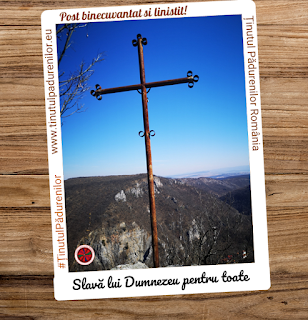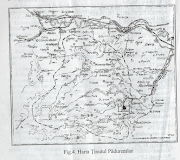This week, starting on Monday, Orthodox Christians have started a period of Fasting which will end on 2nd of May, when Easter is celebrated. For Eastern Orthodox Christians, fasting is an important spiritual discipline, found in both the Old Testament and the New, and is tied to the principle in Orthodox theology of the synergy between the body and the soul. That is to say, Orthodox Christians do not see a division between the body and the soul but rather consider them as a united whole, and they believe that what happens to one affects the other (this is known as the psychosomatic union between the body and the soul). Fasting can take up a significant period of the calendar year. The purpose of fasting is not to suffer, but according to Sacred Tradition to guard against over-consumption and impure thoughts, actions and words. Fasting must always be accompanied by increased prayer and almsgiving (donating to a local charity, or directly to the poor, depending on circumstances). To engage in fasting without them is considered useless or even spiritually harmful. There are four fasting seasons, which include: Great Lent (40 days) and Holy Week (seven days), Nativity Fast (40 days),Apostles' Fast (usually in June, variable length), Assumption of the Virgin Mary Fast (1st-15th of August). Wednesdays and Fridays are also fast days throughout the year (with the exception of fast-free periods). In some Orthodox monasteries, Mondays are also observed as fast days (Mondays are dedicated to the angels, and monasticism is called the "angelic life".
Fasting during these times includes abstention from: meat, fish, eggs and milk products, sometimes oil, red wine (which is often interpreted as including all wine or alcoholic beverages) and sexual activity (where fasting is pre-communion).Lent takes place before the Resurrection of Jesus Christ and is the longest and harshest of all four important fasts. Lent lasts forty days, to which is added the Holy Week. The main reason for fasting during Lent, in the old times, was to prepare the catechumens who were to be baptized for Easter and to enter the church. However, Lent has become absolutely a period of spiritual preparation for all Christians to celebrate the Resurrection of our Lord Jesus Christ.
Following the First Ecumenical Council of Nicaea in 325, the Church of the East established that the duration of the fast should be seven weeks, a period that has remained valid to this day. In Lent, Christians must show increased spiritual care by giving up food of animal origin. Moreover, they must exalt themselves by prayer along with good deeds. In the Byzantine calendar, Lent begins on the Monday after the expulsion of Adam from heaven, and the Latin one with Ash Wednesday.As is well known, fasting is the total retention from certain foods and beverages for religious and moral purposes. Moreover, Christians must refrain from certain unclean thoughts, lusts, passions, or evil actions. This means that physical fasting must be accompanied by spiritual fasting.
The Holy Mass is usually having a character of celebration and joy. This is why the Holy Fathers arranged that during this Lent the Holy Liturgy should not be celebrated only on Saturday and Sunday. On other days," the Liturgy of the previously consecrated Gifts" can be celebrated, except for the aliturgical days, when no Holy Mass is celebrated. The liturgy of the "previously sanctified Gifts" came into being due to the desire of some believers to share during the week as well. We remind you that during this Liturgy, the Holy Gifts are consecrated at the Liturgy celebrated on Sunday, they are kept on the Holy Table, and during the week, when the Liturgy of the Gifts is celebrated, they are offered to the belivers for communion. According to the fasting order of the Church, on the days of Lent, it is until sunset, and the communion is done in the evening after Vespers.
But who knows which are the traditions from Tinutul Padurenilor when the fasting period starts? As we discovered few interesting historical and religious facts about the Lent, let's see what the foresters do, preparing for this period. In the old times, the forester's families were a lot more religious than they are now. It was a whole process before the start of the lent. There are even nowadays 3weeks before it starts, when people are getting ready for it, slowly starting each week to give up food of animal origin and the second week's dairy products. One of the traditions is talking about females from the house washing all the pans and pots before fasting began, putting them in the attic. This was because it was understandable that the whole family would fast and they had to get rid of the smell and taste of all the food of animal products and dairy.
On this day, which coincides with the Leaving of the Easter Lent, a ritual was practiced which aimed to ensure the integrity of crops from the attack of birds and rodents. For dinner that day, the females prepared a rich meal. There was no lack of soup, cabbage, cheese, pies and, of course, bread. The oldest woman in the house cut as large a slice of bread as she could, putting a little of each dish served at dinner, then, with her eyes closed, went out into the darkness outside and groped along the wall of the house to the window or up to a shelf. Here, he put the slice of bread with everything on it, after which he addressed the various savages who could have destroyed the family's sowings (see the subchapter Sacrifice of the first wood chosen for the new house in this chapter). After this practice of improving living things, the woman returned to the house with her eyes closed, an act of magic by analogy. The belief was that just as she does not see the way from the house to the window and back, neither the birds nor the rodents will see her herd with seeds. The bird chirping ritual is a proof of the antiquity of practicing agriculture by foresters.
Thank you once again for your interest in Tinutul Padurenilor! To tell you a secret : It's been our great pleasure to show you beautiful and interesting facts and traditions from our beloved beautiful land of Tinutul Padurenilor.

























0 Comments